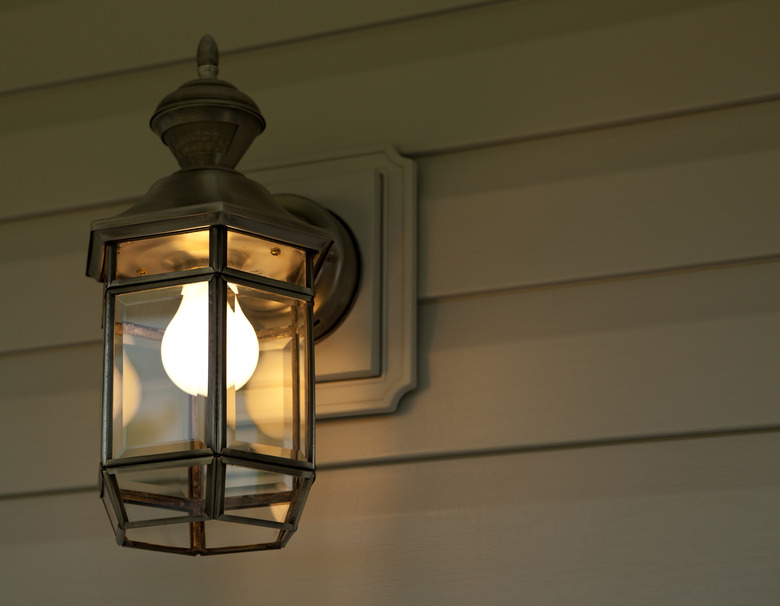How To Make A Porch Light A Motion Sensor
Switching your outdoor light to a motion sensor light offers many benefits. Installing a light that only turns on by a sensor reduces light pollution, allowing you and your neighbors to have a better opportunity to see the stars. It also saves electrical costs – instead of keeping your porch light on for eight hours each evening, a motion sensor may reduce that time to 30 minutes or less. And, motion lights also deter burglars. If a light turns on as a potential burglar approaches your home, it could scare the criminal away. They'll wonder if they've been spotted and quickly leave so as not to get caught.
There are many ways to add a motion sensor to your current porch light. Several of these possibilities involve rewiring and may require an electrician and a town permit. However, there are also simple options that anyone can install – electrical training or experience not required.
Use a Motion Sensor Light Bulb
Use a Motion Sensor Light Bulb
The easiest way to turn your current porch light into a motion sensor is to switch the bulb. These bulbs are equipped with a passive infrared sensor at the top that can detect any object that produces a heat signature. As humans are constantly emitting heat, it will turn on as you enter the sensor's range. To install this light bulb, simply unscrew your current bulb and install a motion sensor bulb. These bulbs can be purchased online or in stores.
Upgrade Security With a Motion Sensor, Camera and Smart Phone Control
Upgrade Security With a Motion Sensor, Camera and Smart Phone Control
If the concept of adding a camera to your motion sensor light appeals to you, you can purchase a kit. The easiest kits to install include just two things: a camera that can detect motion and a USB power adapter. The USB power adapter looks similar to the end of a light fixture socket. One end of the power adapter is screwed into your current light fixture's socket the same way you'd screw in a lightbulb. At the other end of the power adapter, you'll screw in your lightbulb. The power adapter draws its power from your existing socket – there's no need for hardwiring or batteries.
The security camera attaches directly to the power adapter and is then secured to the wall just below the light. The motion sensor is located on your power adapter, turning on both the light and the camera. The system also provides an app for your smartphone. Depending on the product you purchase, the app can provide a variety of tools. For example, you can view who's at your door, communicate with that person, download a video of the recorded event, turn on a loud siren alarm to scare away unwanted visitors and even call 9-1-1.
If You Really Love Your Lightbulb
If You Really Love Your Lightbulb
Can't part with your existing bulb and don't need a camera? A screw-in motion sensor switch may be the answer. While it will look more obvious than a motion sensor light bulb, you can continue to use your preferred bulb to provide light for your porch. These devices are simple to install and appear similar to the USB power adapter, with a sensor hanging below. Like the USB power adapter, screw the base directly into your light fixture's socket. Then, screw your preferred bulb into the base.
Troubleshooting
Troubleshooting
If your new sensor isn't working properly, there are several common reasons. If your motion sensor is turning on during the day or turning on for no reason, it could be that it's sensing heat from another source, such as a dryer vent or a heat-reflective surface.
Another possible cause is that the outside temperature is warmer than people's body heat. For either reason, decrease the sensitivity setting or reposition the motion sensor away from the source of the heat. Daytime light could also be the result of your sensor being in a dark location. If this is the case, you'll need to move your sensor to a different, lighter location. If your motion sensor isn't working at night, possible reasons could be that your motion sensor is aimed in the wrong direction or the outside air is too close to your body heat. For the former, re-aim your sensor so it properly detects human movement, and for the latter, increase the sensitivity setting.
